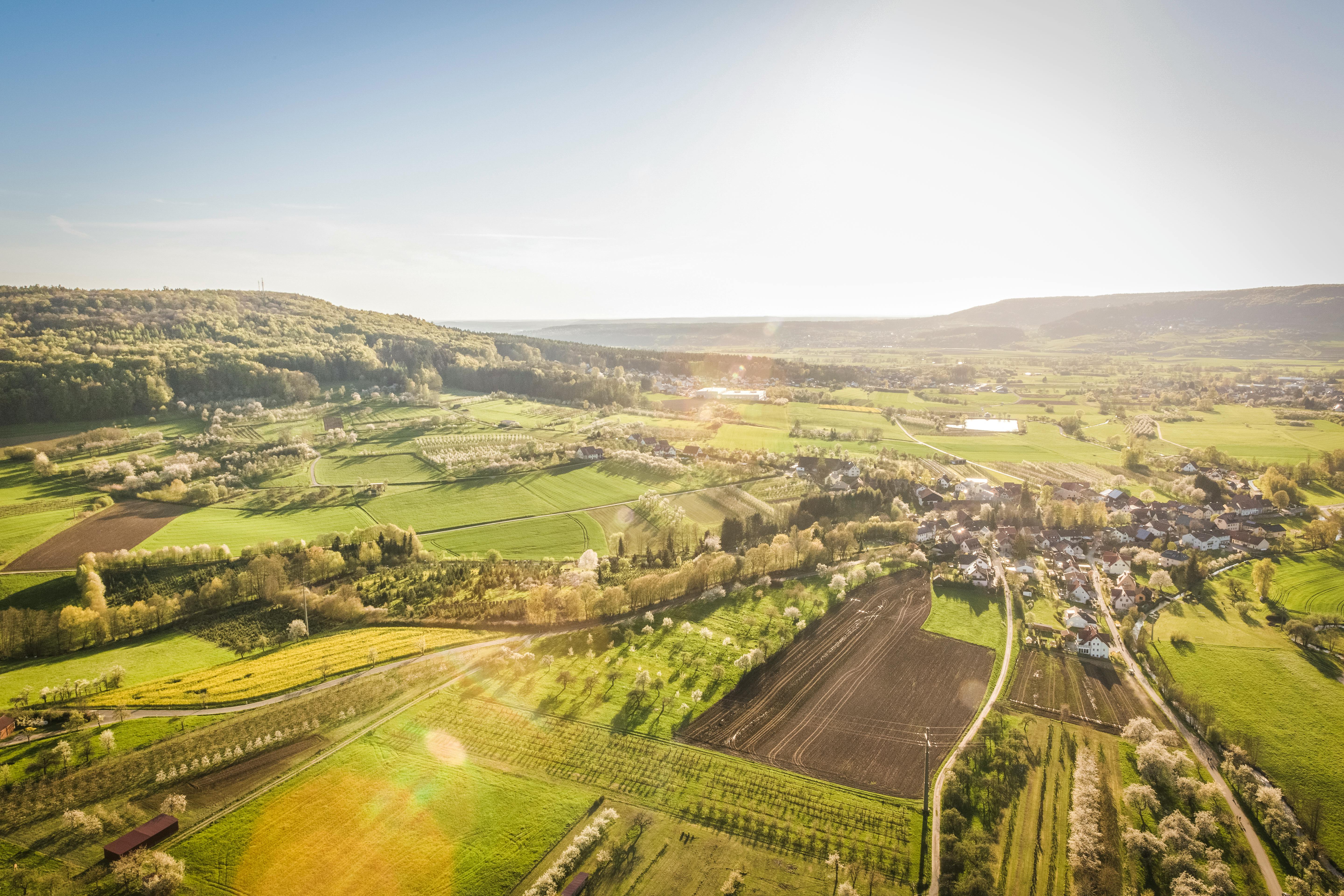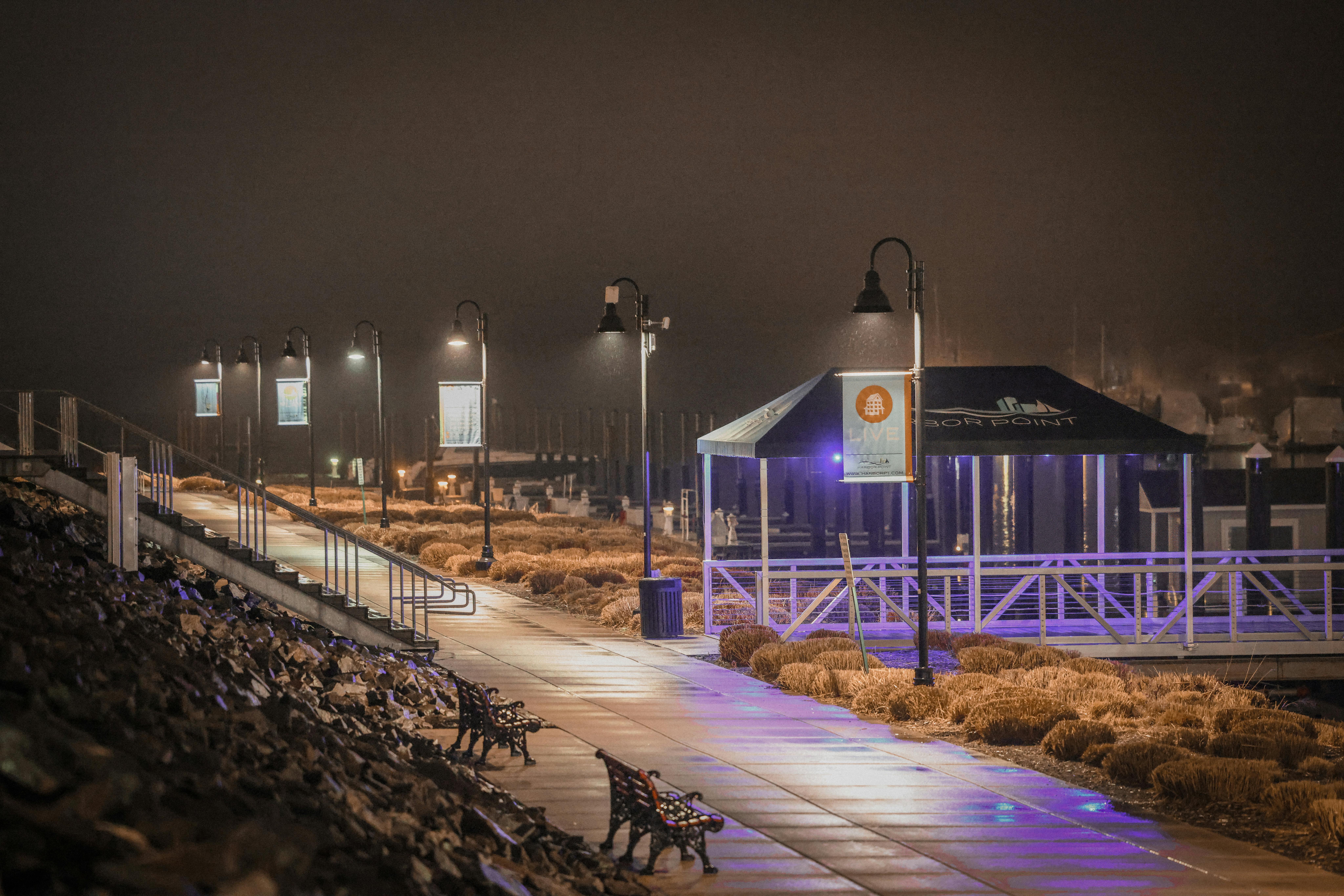Uncovering the Best Internet Options for Rural and Remote Areas
Seeking high-speed internet oasis in rural areas? Learn about internet options to connect remote homesteads to the digital stream.

Uncovering the Best Internet Options for Rural and Remote Areas
Are you searching for a high-speed internet oasis in a rural connectivity desert?
Finding a reliable service out here can be like seeking a needle in a haystack, truly challenging.
Yet, with some guidance, even the most remote homesteads can tap into the digital stream, bridging the urban-rural divide.
Seeking high-speed internet oasis in rural areas? Learn about internet options to connect remote homesteads to the digital stream.
Navigating Connectivity in Sparsely Populated Regions
In the vast expanses where nature outnumbers neon signs, connecting to the digital world presents a unique conundrum. The landscape’s tranquil beauty often comes at the cost of technological amenities, placing residents at a crossroads between pastoral serenity and the pulse of the internet. Facilitating this connection demands ingenuity and an understanding of the limited, yet viable options that exist to tether these secluded areas to the wider web.
The trek for bandwidth beyond city limits requires knowledge akin to a trailblazing pioneer. One must traverse the landscape of internet options with a keen eye for what’s available and compatible with the geography. The challenge escalates as distance from urban centers increases, but the rewards—access to global information, remote work opportunities, and digital entertainment—fuel the quest for a connection that defies the odds set by isolation.
Satellite Internet: A Sky-High Solution
Satellite internet beams data directly from space, providing coverage where terrestrial networks fall short. It's a beacon of connectivity for the digitally deserted.
Remote areas, now reachable. Satellite arrays orbiting Earth circumvent natural and man-made barriers, linking rural households to high-speed global networks.
Through rain or shine, satellite internet streams at altitudes unconstrained by Earth's rugged terrains.
Though obstructions like severe weather can interfere, satellite tech brings the world closer. Advanced satellites mitigate lag, empowering rural communities with robust internet solutions.
Grounded Alternatives: DSL and Fixed Wireless
DSL, or Digital Subscriber Line, leans on existing telephone networks to provide broadband internet, making it a staple in many rural communities. Despite the reliance on older infrastructure, DSL maintains a solid presence where more advanced options are lacking.
Fixed wireless connects homes directly to nearby towers using radio frequencies, offering an alternative where wired connections fall short. This method delivers speeds competing with DSL, sometimes surpassing them.
Installation for fixed wireless is relatively unintrusive, generally requiring a simple antenna setup outside your home that connects to a base station. Unlike satellite services affected by weather, fixed wireless promises more consistent connectivity, albeit with a reliance on proximity to transmission towers.
The geographic layout of your area will influence DSL and fixed wireless efficacy. Hilly landscapes and dense foliage can dampen signals, making site surveys essential to gauge potential service quality. Akin to finding the right key for a lock, selecting between DSL and fixed wireless hinges on matching technology to the nuances of your local topography.
Harnessing the Power of Mobile Networks
Leveraging mobile networks for internet access can be a game-changer in secluded locales, where traditional broadband services may not reach. With advancements in cellular technology, namely the widespread deployment of 4G LTE and the progressive roll-out of 5G networks, mobile hotspots and cellular data have emerged as valuable allies for the digitally underserved. These portable devices capture cellular signals and create a personal Wi-Fi bubble, allowing multiple gadgets to connect with ease. While they depend on carrier coverage, the continuous expansion of cell towers has made mobile networks an increasingly reliable lifeline for rural netizens. Keep in mind, though, that this option often includes data caps and variable speeds, so it's crucial to assess your internet habits and provider plans to ensure your needs are met without unwelcome overage fees.
From Cell Phones to Internet Hotspots
Transforming a cell phone into a Wi-Fi hotspot is a simple yet powerful way to access the internet in areas beyond the reach of standard broadband services. This process, often referred to as "tethering," allows other devices to connect to your phone's internet using Wi-Fi, Bluetooth, or USB.
The connectivity is immediate, convenient, and mobile. However, tethering can quickly consume your phone's data allowance, leading to extra charges or throttled speeds.
For those residing in remote locations where conventional broadband falls short, mobile hotspots offer a beacon of connectivity. These devices, often no larger than a deck of cards, create a secure, personal Wi-Fi network by tapping into cellular service providers' networks, offering internet on the go or at home.
When choosing a mobile hotspot, consider the signal strength in your area and the data plans available. Mobile hotspots can provide dependable service and the flexibility to connect multiple devices, making them an ideal choice for families, telecommuters, and anyone in need of a reliable internet connection in less accessible regions. However, they still come with limitations, such as data caps and reliance on cellular network coverage, and thus should be selected with careful attention to your specific usage needs and local service quality.
Significance of Cell Tower Proximity
Cell tower distance is crucial for reliable rural internet connectivity. Nearby towers mean stronger signals and faster, more consistent service.
As distance from a cell tower increases, signal strength diminishes. This can lead to slower speeds, more frequent disconnects, and reduced data throughput. Consequently, closer proximity to cell towers is a significant advantage.
For remote users relying on mobile hotspots, the proximity to a cell tower directly impacts the efficiency of their connection. A closer tower ensures better reception, which translates to a more stable and quicker internet experience.
In areas with sparse cell tower distribution, signal boosters can sometimes mitigate the distance challenge, but they cannot replace the benefits of being near a tower. Thus, precise mapping of local cell towers is critical for optimal internet setup.
Ultimately, when evaluating mobile hotspot options, the proximity to cell towers should be a top consideration to ensure adequate service and avoid connectivity frustrations.
Pioneering Rural Internet with Emerging Tech
Innovative solutions are carving pathways to enhanced rural connectivity, meshing traditional and cutting-edge technologies. This fusion creates a robust framework for internet access that defies geographic barriers.
Groundbreaking initiatives like low-earth orbit (LEO) satellite constellations are poised to revolutionize internet service for underserved rural communities, ensuring high-speed connections with minimal latency. With these advancements, rural internet is on the cusp of a transformative era.
The synergy of "smart agriculture" and "digital homesteading" relies upon these imperative improvements in rural internet infrastructure.
Innovations Aiming to Bridge the Digital Divide
The surge in digital inclusivity is powered by novel technologies targeting underserved regions.
- Low-Earth Orbit (LEO) Satellites: Companies like SpaceX are deploying massive constellations aiming to provide global coverage with lower latency.
- 5G Cellular Networks: Enhanced mobile broadband and IoT integration pave the way for 5G to offer rural areas faster, more reliable connectivity.
- TV White Space Broadband: Repurposing unused TV frequencies to provide long-range, cost-effective internet solutions.
- High Altitude Platforms (HAPs): Stratospheric balloons or drones designed to deliver internet access to remote locations with terrestrial challenges.
- Fiber-Optic Collaborations: Local co-ops and governments partnering to extend fiber-optic infrastructures into rural landscapes.
These initiatives signify a monumental leap toward ubiquitous internet access.
Integrating local terrain and community needs is critical to the success of these technological forerunners.
Prospects of Low-Earth Orbit Satellites
Low-Earth Orbit (LEO) satellites could revolutionize rural internet connectivity by providing widespread, high-speed access.
- Reduced Latency: LEO satellites orbit closer to Earth, significantly lowering communication delay compared to geostationary satellites.
- Quicker Deployment: These constellations can be deployed and scaled up relatively quickly to meet growing demands.
- Global Reach: Offering coverage in areas previously unserved by traditional methods, especially in remote and hard-to-reach regions.
- Potential for High Speeds: They are designed to support broadband speeds comparable to cable or fiber-optic networks.
However, this technology is in a nascent stage and still has hurdles to overcome.
Their success hinges on balancing costs, regulatory approval, and environmental considerations.
Deciphering the Best Rural Internet Service
Navigating the labyrinth of rural internet options requires astute consideration of the local digital terrain. The optimal solution balances speed, reliability, and affordability, converging into a service that fits the geographical and cultural fabric of a rural community. Whether it's satellite, DSL, fixed wireless, or a robust mobile hotspot plan, the decision demands a meticulous assessment of infrastructure limitations and user needs. Threading this needle can unlock a world of digital empowerment for those in the rural expanse.
Evaluating Internet Speeds and Reliability
When considering internet options, speed is a quintessential factor, but reliability cannot be overlooked. A fast connection hobbled by frequent interruptions offers little solace to the remote user hungry for stability.
Reliability in rural internet provision is paramount; consistent service trumps sporadic bursts of high speed. Consumers often face a trade-off between bandwidth and dependability, and they must weigh the costs of potential downtime against the benefits of faster data transfer. Satellite and fixed wireless solutions provide varying degrees of reliability, often affected by environmental factors such as weather and topography.
Furthermore, speed is not solely about
peak performance numbers; it encompasses the consistency of that performance over time. Bandwidth promises can be alluring, but the actual experience hinges on the steady delivery of service. Users should investigate average speeds during peak usage times to ensure their needs will be met consistently.
Ultimately, when evaluating internet speeds and reliability, one must consider the entirety of the service landscape. An ideal scenario combines a respectable speed with unwavering reliability, providing a seamless user experience. Testing actual speeds and scrutinizing the provider's track record for stability can guide consumers to make informed decisions that harmonize their online activities with the realities of rural connectivity.
Balancing Cost and Performance for Rural Needs
Navigating rural internet options demands prudence.
Rural residents often juggle limited options and scarce resources. They must weigh the allure of affordable monthly rates against the potential for frustratingly slow speeds and unreliable connections. The trade-offs are complex; pricier options may promise higher speeds but could also strain household budgets. Conversely, affordable plans might fail to deliver necessary bandwidth, crippling online activities essential to modern living standards.
Selecting the perfect plan involves careful consideration.
When faced with the choice to economize or to ensure performance – a dilemma faced by many rural dwellers – it's prudent to analyze long-term needs against short-term savings. Opt for a plan that supports crucial online tasks without wreaking havoc on finances. It's about finding that sweet spot of value-for-money.
Future-proofing is an essential variable in the equation.
As we look toward the horizon of internet technology advancements, we see burgeoning solutions poised to transform rural connectivity, with rollouts expected by late 2023 further diversifying the internet landscape. These innovations could radically reshape cost and performance metrics, making now the perfect time to reassess and recalibrate rural internet strategies in anticipation of emerging opportunities.
Who Provides Internet in Rural Areas
Rural areas often face a constellation of service providers ranging from well-known satellite companies to local cooperatives that offer specialized rural internet services. These providers may offer satellite, DSL, or even fixed wireless solutions, adapting their services to the intricacies of rural topographies.
Couple this with government-funded expansion initiatives, and you find a growing tapestry of options. Regional players and national services alike strive to bridge the digital divide, steadily expanding their reach and refining connectivity solutions for communities outside urban sprawls.
What Can I Expect from These Service Options
With satellite internet, expect wide coverage but potentially higher latency and sensitivity to weather conditions. Speeds can vary, and data limits may apply.
DSL shines with stable connections, but availability and speeds may decrease with distance from the provider's facilities.
Fixed wireless offers a compromise, delivering decent speeds without cable installation, but requires a line of sight to a transmission tower, which might be challenging in hilly terrains.
Lastly, mobile hotspots provide flexibility and portability, allowing you to connect on the go; however, they're subject to network congestion and may incur high data costs. They're ideal for lighter, less data-intensive online activities and not as suitable for streaming or large downloads. Always consider the "fine print" of service agreements to fully understand data allowances, throttling policies, and associated fees.
Who's the Best Choice?
Identifying the best choice depends largely on the unique needs and constraints of rural residents. Satellite providers offer broad coverage, but with certain trade-offs.
The optimal selection often hinges on the interplay between service availability, cost constraints, and usage requirements. For example, a household that primarily uses the internet for email and light browsing may find a DSL connection to be more than sufficient.
However, for data-intensive activities such as telecommuting, online education, or streaming, a more robust option like fixed wireless could be the more appropriate choice. Providers specializing in this technology often tailor their services to meet the heavier demands of modern internet usage.
In the final analysis, rural internet users must weigh the relative merits of each service type against their personal needs. While emerging technologies like Low Earth Orbit (LEO) satellite systems promise to revolutionize rural connectivity, they're not yet widely available. Thus, it's crucial to select an established service that aligns with both current and foreseeable future needs, understanding that the best choice is one that offers a balance of reliability, speed, and cost-effectiveness.
What is the difference between Viasat and HughesNet?
Viasat and HughesNet are both satellite internet providers that offer high-speed internet and cable TV services. However, there are some differences between the two.
Viasat is known for its fast speeds and extensive coverage. They have a wide range of plans available, with download speeds up to 100 Mbps, making it a great option for those who need a lot of bandwidth. Viasat's service is delivered via satellite, which means it can be accessed in remote areas where other internet options may not be available.
On the other hand, HughesNet also offers reliable high-speed internet and cable TV services. However, their speeds may not be as fast as Viasat's, with download speeds up to 25 Mbps. HughesNet uses geostationary satellites to provide coverage, which means it may be a better option for those in more densely populated areas where there may be potential for congestion on the network.
In terms of pricing, both Viasat and HughesNet offer competitive packages with different plan options to suit various needs and budgets. It's always recommended to compare plans and pricing in your specific area to determine which provider offers the best value for you.
Overall, both Viasat and HughesNet provide reliable satellite internet and cable TV services. The choice between the two ultimately depends on your location, desired internet speeds, and personal preferences.
Viasat provides high-speed internet and cable TV services to customers. Many people wonder if
Is Viasat fast enough for Netflix?
Viasat is fast enough for streaming services like Netflix. The answer is yes, Viasat offers speeds that are more than capable of streaming Netflix without any buffering or lag.
With Viasat, you can enjoy a seamless streaming experience, whether you're watching your favorite shows or movies on Netflix or any other streaming platform. The speeds offered by Viasat ensure that you can stream in high definition without any interruptions.
When it comes to internet speeds, Viasat offers different plans to cater to various needs. Whether you're a casual internet user or a heavy streamer, you can choose a plan that suits your requirements. The higher-tier plans offer faster speeds, ensuring a smooth streaming and browsing experience.
In addition to its fast internet speeds, Viasat also offers cable TV services, providing a wide range of channels for your entertainment needs. You can enjoy your favorite shows, movies, and live events with Viasat's cable TV packages.
So, if you're looking for high-speed internet and cable TV deals in your area, Viasat is definitely worth considering. With their reliable service and fast speeds, you can enjoy streaming Netflix and all your other favorite content without any issues.




